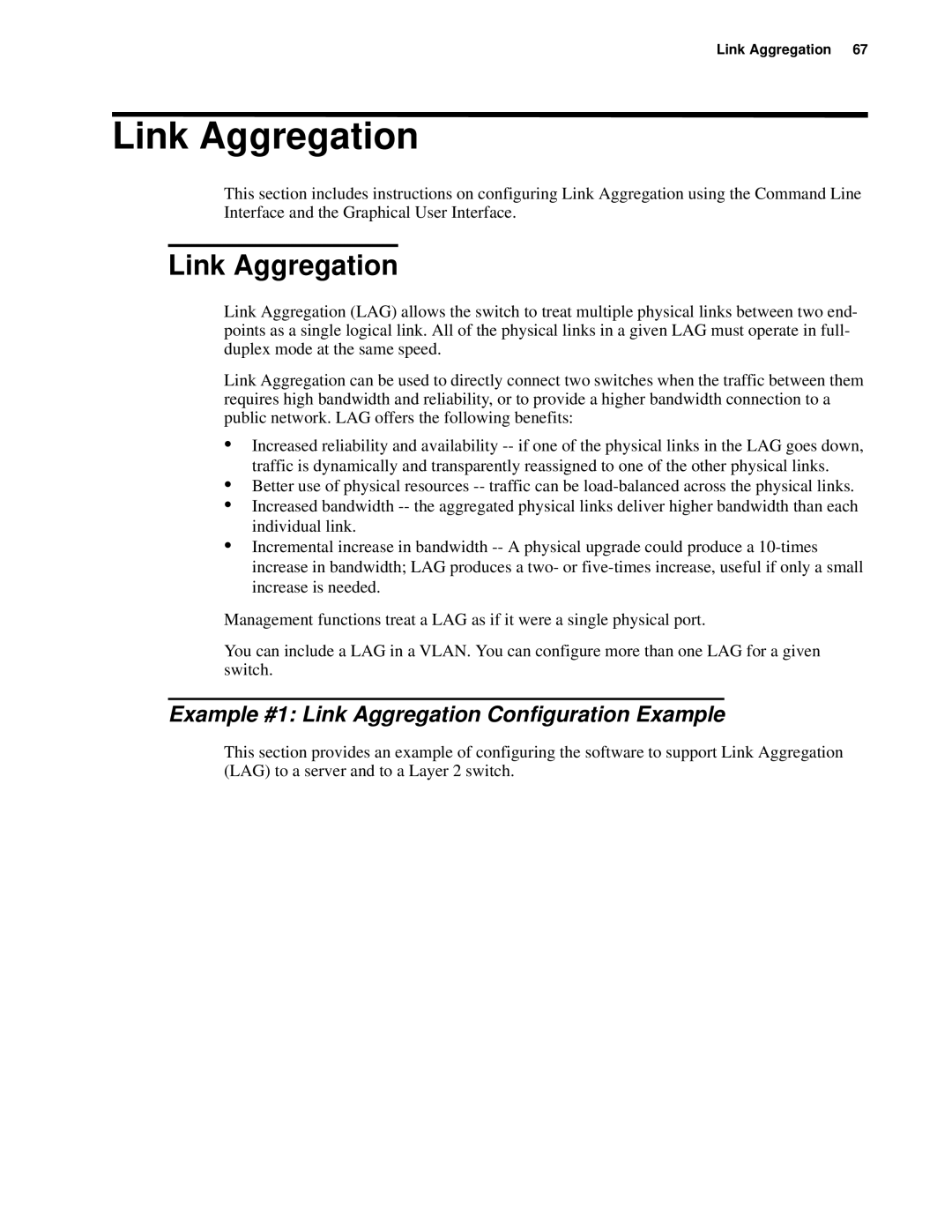
Link Aggregation 67
Link Aggregation
This section includes instructions on configuring Link Aggregation using the Command Line Interface and the Graphical User Interface.
Link Aggregation
Link Aggregation (LAG) allows the switch to treat multiple physical links between two end- points as a single logical link. All of the physical links in a given LAG must operate in full- duplex mode at the same speed.
Link Aggregation can be used to directly connect two switches when the traffic between them requires high bandwidth and reliability, or to provide a higher bandwidth connection to a public network. LAG offers the following benefits:
•
•
•
•
Increased reliability and availability
Incremental increase in bandwidth
Management functions treat a LAG as if it were a single physical port.
You can include a LAG in a VLAN. You can configure more than one LAG for a given switch.
Example #1: Link Aggregation Configuration Example
This section provides an example of configuring the software to support Link Aggregation (LAG) to a server and to a Layer 2 switch.
